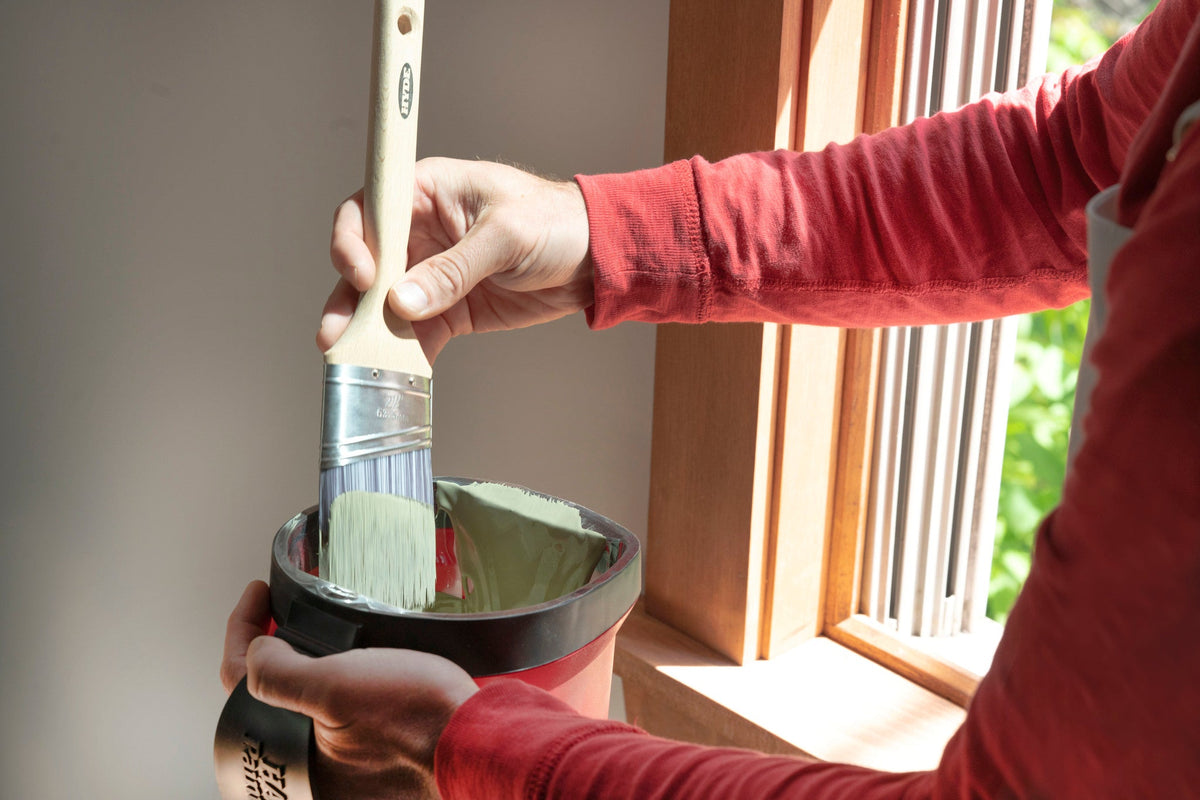

Painter's tape is a go-to for many, but if you're looking for a faster, cleaner way to achieve sharp paint edges, this guide will teach you everything you need to know.
Why Skip the Tape?
Painter's tape can be useful, but it has drawbacks:
- Time-Consuming: Applying tape precisely can add hours to your project.
- Uneven Results: Tape can let paint seep under its edges, ruining the clean line you wanted.
- Wasteful: Tape creates unnecessary waste, especially for larger projects.
With the right tools and techniques, you can skip the tape and still achieve crisp lines every time.
Tools You’ll Need
To paint without tape, you’ll need a steady hand and the right equipment:
- High-Quality Brushes: Opt for an angled sash brush for precise control.
- Cutting Edge Tool: Tools designed for trim can help guide clean edges.
- Drop Cloths and Shields: Protect floors and surfaces with a drop cloth or paint shield.
- Good Lighting: Ensure the area is well-lit to see where you're painting clearly.
Steps for Clean Paint Edges
- Prepare the Surface. Prep is everything. Clean the surface to remove dust and oils. Sand any uneven areas lightly, and fill holes or cracks with spackle. Use a putty knife, to ensure a smooth finish.
- Load the Brush Properly. Dip your angled brush about halfway into the paint, tapping off excess. Avoid overloading the brush to minimize drips.
- Cut in First. Start at the edges before painting larger sections. Rest the narrow edge of the angled brush against the trim or corner and pull it steadily along the edge in one smooth motion. Use your dominant hand for control and brace your arm or wrist against a stable surface.
- Work in Sections. Paint small sections at a time to maintain precision. If you make a mistake, wipe the error immediately with a damp cloth before the paint dries.
- Finish with a Roller. Once the edges are complete, fill in the larger areas using a roller. This ensures consistency in paint texture.
Advanced Tips
- Use a Paint Shield. A paint shield allows you to cover adjacent areas while painting edges. Simply hold the shield in place and paint along its edge for a perfect line.
- Maintain Brush Quality. A high-quality brush is essential. After each use, clean brushes thoroughly with warm, soapy water to maintain their shape and bristle integrity.
- Practice Makes Perfect. If you're new to painting without tape, practice your cutting-in technique on scrap wood or cardboard. With time, you’ll develop a steady hand.
The Benefits of Going Tapeless
Painting without tape offers freedom and efficiency. You'll save time, reduce waste, and gain a professional-looking finish that enhances the value of your work. Plus, using high-quality tools like those from Hyde ensures the best results every time. Whether you're painting walls, trim, or furniture, mastering this technique is a game-changer. Say goodbye to the hassle of painter’s tape and hello to clean, crisp edges with every project!

